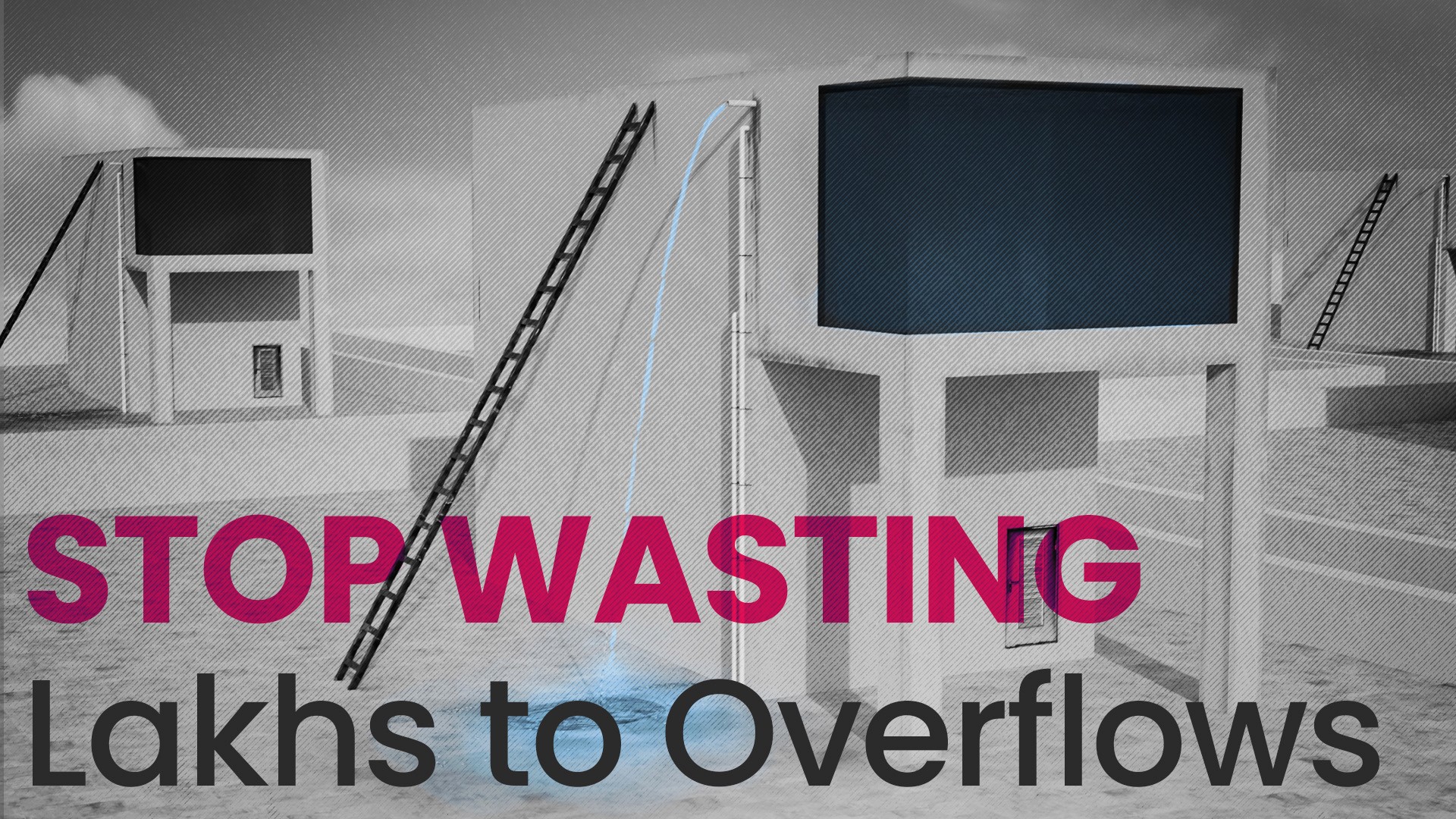How a 5-Tower Complex in Hyderabad Stopped Water Overflows and Saved Over ₹20 Lakhs with Waltr
Aug 2024

Muslima Alia
A 4.1-acre residential complex in Hyderabad—home to five towers and 13 water tanks—was struggling with frequent water overflows, wasting lakhs of liters every month. After installing Waltr A smart water level indicators, the complex gained complete visibility and control over its water system. Overflows were eliminated, water usage was optimized, and the property saved over ₹20 lakh annually through efficient, data-driven water management.
Goals
Demonstrate how Waltr A prevents water overflows and reduces unnecessary costs through real-time tank monitoring.
Help residential buildings adopt a data-driven water management system that ensures long-term savings and operational efficiency.
Problem
The residential complex had no visibility into how much water was being wasted each month. After investigation, it was discovered that 12 out of 13 water tanks were overflowing regularly, resulting in the loss of over 15 lakh liters of water every month. This also meant the motors were running around 320 extra hours each month, pumping water that simply spilled over leading to an avoidable monthly cost of ₹1.5 lakh. Beyond the financial loss, this constant overflow increased electricity consumption, added strain on infrastructure, and made routine maintenance more challenging for the facility team.
Our Approach and Solution
To gain real-time visibility into every tank, we installed 13 Waltr A smart (water level indicators) —one in each tank.
Real-Time Visibility
Each Waltr A created a digital twin of its tank, offering live data on water levels, inflow, and consumption.
Instant Alerts
The system sent timely notifications whenever a tank was about to overflow, enabling quick intervention and reducing the need for manual monitoring.
Historical Insights
Using past data and visual trends from the Waltr dashboard, the team identified recurring overflow patterns and adjusted pump operations to match actual water demand.
This setup allowed the complex to optimize motor schedules, eliminate overflows, and control water usage—saving both money and resources, all without disrupting daily operations.
Results: Clear, Measurable Benefits
Cost Savings
With tank overflows eliminated and pump overrun reduced by 320 hours per month, the complex saved approximately ₹1.5 lakh per month—adding up to ₹18,00,000 annually in water and electricity savings.Reduced Maintenance Effort
Real-time insights and alerts helped the team act before problems escalated, reducing emergency repairs, water damage, and overall maintenance efforts.Improved Operational Efficiency
Digital twins of each tank enabled smarter scheduling, fewer manual checks, and faster response times from the maintenance team.High Return on Investment
Even with a Waltr subscription cost of ₹39,500/month (₹4,74,000 annually), the complex achieved net savings of ₹13,26,000 per year, making it a cost-effective and sustainable solution.
Conclusion
The deployment of Waltr A transformed water management in the complex—turning a costly, inefficient system into a smart, automated solution. By preventing overflows and optimizing pump usage, the complex achieved significant financial savings and boosted operational efficiency. This case study shows how smart technology like Waltr A empowers residential communities to take control of their water systems, reduce waste, and protect infrastructure—while delivering strong returns on investment.
Explore our blog or watch the video to see how water overflows silently drive-up costs in large complexes—and how Waltr products can help you.
Visit www.waltr.in to learn more. Got questions? reach out today at WhatsApp
